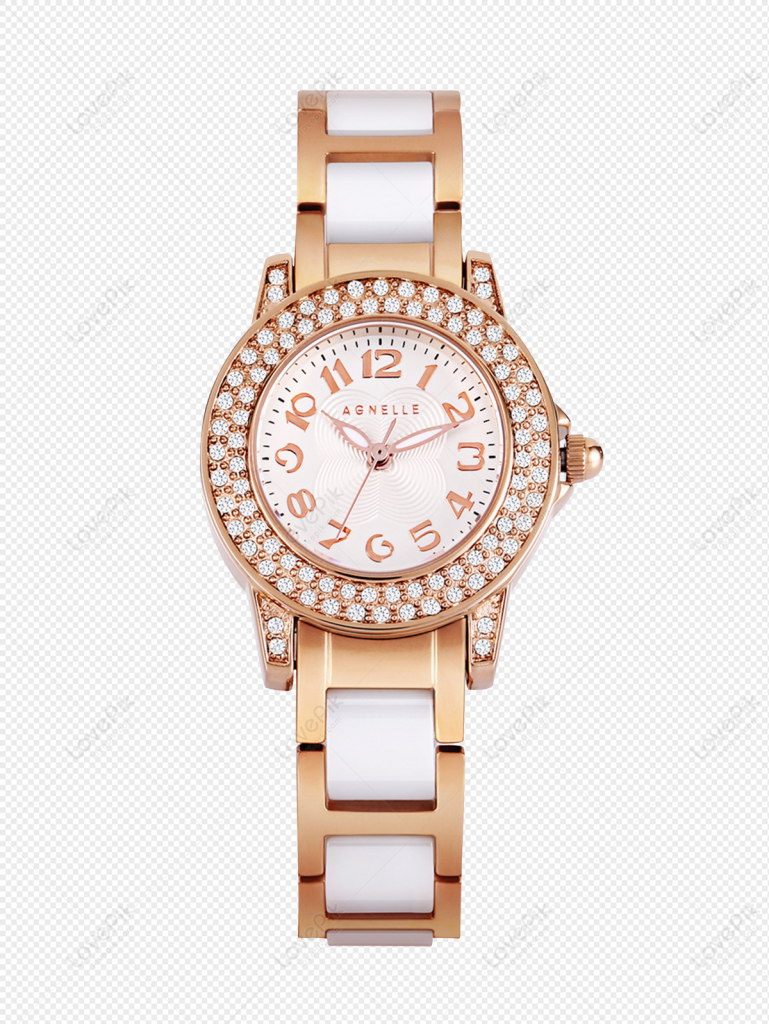Watch is a timekeeping device designed to be worn on the wrist or carried in a pocket. Watch serves the primary function of telling time, but modern watches have evolved to include a variety of additional features, combining both functionality and fashion.
Types of Watches
- Analog Watches: Analog watches display time using a traditional clock face with hour, minute, and sometimes second hands. The face may include numbers, Roman numerals, or symbols to mark the hours.
- Digital Watches: These watches display time in numerical digits on an LCD or LED screen. Digital watches often come with additional features like alarms, timers, and stopwatches, making them practical for sports and daily use.
- Smartwatches: Smartwatches are the most technologically advanced type of watch. They not only display time but also integrate features like fitness tracking, notifications, apps, and even voice assistants. Smartwatches often sync with smartphones, offering enhanced connectivity.
- Mechanical Watches: These are traditional watches that operate without batteries, using a complex system of gears and springs. Mechanical watches come in two types:
- Manual: Requires winding by hand to store energy in the mainspring.
- Automatic: Self-winds through the movement of the wearer’s wrist, utilizing a rotor inside the watch.
- Quartz Watches: Quartz watches are powered by a battery and use a quartz crystal to regulate time. They are highly accurate and require less maintenance compared to mechanical watches. Quartz movements are the most common in mass-produced watches.
- Diving Watches: Watch Designed specifically for underwater use, diving watches are highly durable, water-resistant, and capable of withstanding high pressure. These watches often feature rotating bezels to track dive times and are engineered to be readable in low-light conditions.
- Luxury Watches: These are high-end, often handmade watches crafted from premium materials like gold, platinum, and diamonds. Brands like Rolex, Patek Philippe, and Audemars Piguet are famous for their craftsmanship and prestige. Luxury watches often serve as status symbols and investments, in addition to their timekeeping functions.
Key Components of a Watch
- Watch Case: The case is the body of the watch that houses all the internal components. Cases are made from materials like stainless steel, titanium, ceramic, or plastic. The design and durability of the case play a crucial role in the watch’s appearance and protection.
- Dial (Watch Face): The dial is where the time is displayed, typically using hands in analog watches or numbers in digital watches. It can vary in color, texture, and design, with different styles of markers or numerals.
- Watch Crown: Found on most analog and mechanical watches, the crown is a small knob on the side of the case used for setting the time or date. In mechanical watches, it is also used for winding the movement.
- Movement: The movement is the internal mechanism that powers the watch and controls its timekeeping. As mentioned earlier, movements can be mechanical (manual or automatic) or quartz (battery-powered).
- Crystal: The crystal is the transparent cover over the watch face, protecting it from dust and damage. Crystals are made from materials like acrylic, mineral glass, or sapphire, with sapphire being the most scratch-resistant and durable option.
- Strap/Bracelet Watch: The strap or bracelet is what attaches the watch to the wrist. Straps can be made from leather, fabric, rubber, or metal. Bracelets are often made of metal links and are more durable and formal, while leather or fabric straps offer a more casual look.
- Watch Bezel: The bezel is the ring around the dial, often used for functional or decorative purposes. In some watches, like diving watches, the bezel can rotate to track time. In others, it may be purely aesthetic, adding to the overall design of the watch.
Functions and Features
- Watch Chronograph: A chronograph is a feature that allows a watch to function as a stopwatch. It typically includes additional sub-dials to measure seconds, minutes, and even hours.
- Water Resistance: Many watches are designed to be water-resistant to varying degrees. Entry-level watches may resist minor splashes, while specialized diving watches can function at depths of 200 meters or more.
- Watch Calendar/Date Display: Most modern watches include a small window that displays the current date. Some advanced models offer additional complications, such as day-date, moon phase, or even perpetual calendars that automatically adjust for leap years.
- GMT/World Time: Watches with a GMT function allow the wearer to track time in multiple time zones simultaneously, making them ideal for frequent travelers. World time watches go a step further, displaying the time in 24 or more different cities around the globe.
- Watch Tachymeter: A tachymeter scale is usually found around the bezel of chronograph watches. It allows the wearer to measure speed based on time and distance.
- Heart Rate Monitor & GPS {Watch}: Watch features are commonly found in smartwatches and fitness trackers. Heart rate monitors measure pulse, while GPS provides location tracking, making these watches popular for athletes and outdoor enthusiasts.
Evolution of Watches
- Pocket Watches: In the 16th to 19th centuries, watches were primarily carried in pockets and were considered luxury items. They were often attached to a chain and worn by men.
- Wristwatches: The modern wristwatch became popular during World War I, as soldiers found wristwatches more practical than pocket watches. By the 20th century, wristwatches became common for both men and women.
- Smartwatches and Fitness Trackers: With the rise of wearable technology, watches have evolved into powerful gadgets. Devices like the Apple Watch, Garmin, and Fitbit combine the traditional purpose of timekeeping with modern functionality, such as notifications, fitness tracking, and health monitoring.
Watches as Fashion Accessories
Watches are more than just functional devices—they are also significant fashion accessories. Many people select watches based on their style, brand prestige, and overall aesthetic appeal. A luxury watch can be a symbol of status, while a minimalistic design might appeal to those who prefer simplicity. There are watches designed for formal wear, casual settings, sports, and outdoor adventures, making them versatile accessories.
In essence, watches blend technology, craftsmanship, and style, offering a personal way to keep track of time while reflecting individual tastes and needs.



Pingback: Rolls-Royce Phantom - My Blog